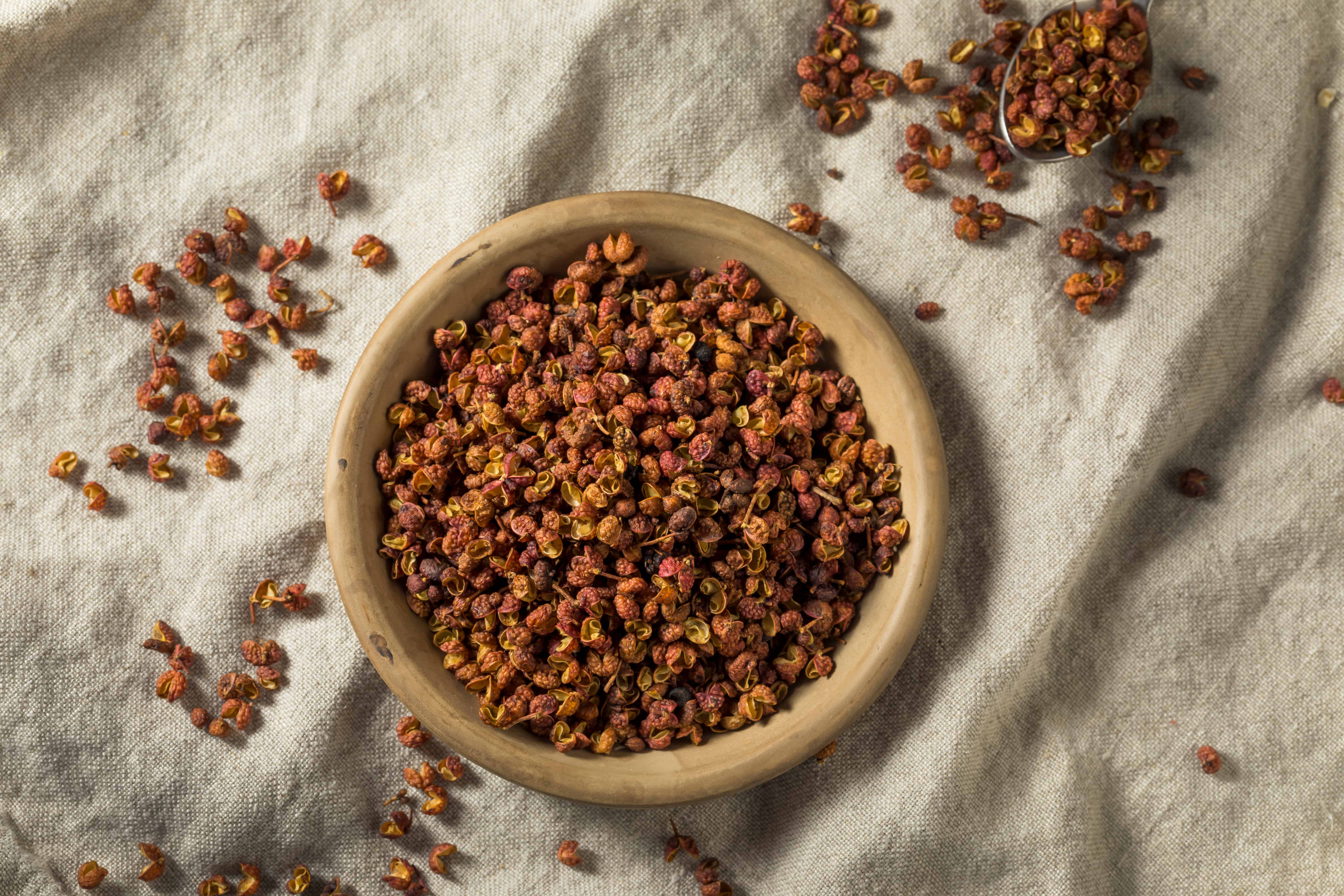Szechuan peppercorns, also known as Sichuan pepper or Chinese pepper, are a spice native to the Sichuan province of China. Despite their name, they are not actually related to black pepper, but rather come from a species of the prickly ash tree.
Szechuan peppercorns have a unique and complex flavor profile that is both spicy and slightly citrusy. They produce a tingling sensation in the mouth that is sometimes described as numbing, due to the presence of a compound called hydroxy-alpha-sanshool. This sensation is a key part of the experience of eating Szechuan cuisine.
Why are Szechuan peppercorns used in cooking?
In Chinese cooking, Szechuan peppercorns are often toasted and then ground to make a spice powder that is used as a seasoning for meat, poultry, and vegetable dishes. They are also used in marinades, rubs, and sauces.
Szechuan peppercorns offer a unique and bold flavor to dishes, with a subtle hint of citrus that sets it apart from other spices, to give you an idea how they can be used.
In addition to their flavor and culinary uses, Szechuan peppercorns are also believed to have medicinal properties and are used in traditional Chinese medicine to treat digestive issues and other ailments.
How should Szechuan peppercorns be used in cooking?
When using Szechuan peppercorns, it is recommended that they are either crushed or lightly toasted before being added to dishes in order to bring out the full flavor.
In addition, these peppercorns should always be used as a finishing spice, since their flavor will dissipate over time when cooked for too long. You can also use them whole or crushed depending on the dish and your preference.
Here are some methods for crushing Szechuan peppercorns:
- Mortar and pestle: This traditional method involves crushing the peppercorns with a mortar and pestle. Place the desired amount of peppercorns in the mortar and use the pestle to crush them into a coarse or fine powder.
- Rolling pin or heavy pan: You can also place the peppercorns in a plastic bag and crush them with a rolling pin or a heavy pan. This method can be a bit messier, so make sure to use a sturdy bag and work over a clean surface.
- Spice grinder: If you have a spice grinder or a coffee grinder that you use exclusively for spices, you can use it to grind Szechuan peppercorns. Simply add the peppercorns to the grinder and pulse until you achieve the desired texture.
Popular dishes that use Szechuan peppercorns
Szechuan peppercorns are a key ingredient in many traditional Szechuan dishes and are used to add a unique and complex flavor and aroma to the dishes. Here are some popular Szechuan dishes that use Szechuan peppercorns:
- Mapo tofu: This spicy and flavorful dish is made with tofu, ground pork, and a spicy sauce that includes Szechuan peppercorns, chili bean paste, and fermented black beans.
- Kung Pao chicken: A popular Chinese-American dish that features chicken stir-fried with peanuts, vegetables, and a spicy sauce that includes Szechuan peppercorns.
- Dan dan noodles: A classic Szechuan noodle dish that features a spicy sauce made with chili oil, Szechuan peppercorns, and soy sauce, along with ground pork, scallions, and peanuts.
- Twice-cooked pork: A dish made with sliced pork belly that is first boiled and then stir-fried with vegetables and a spicy sauce that includes Szechuan peppercorns.
- Hot pot: A communal cooking and eating experience where diners cook various meats, seafood, and vegetables in a flavorful broth that is infused with Szechuan peppercorns, among other spices.
Final thoughts
It’s worth noting that for many years, Szechuan peppercorns were banned in the United States due to concerns about the spread of citrus canker disease, which can affect citrus trees.
However, in 2005, the USDA lifted the ban on Szechuan peppercorns that are heated to a temperature of at least 160°F (71°C) during processing, which effectively eliminates the risk of spreading the disease. Today, Szechuan peppercorns can be found in many specialty food stores and online retailers, and are widely used in both Chinese and non-Chinese cuisines.

